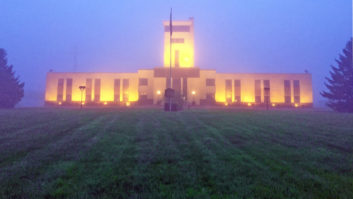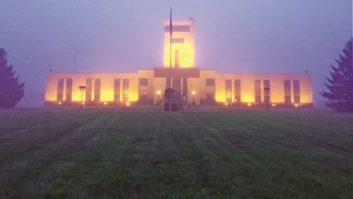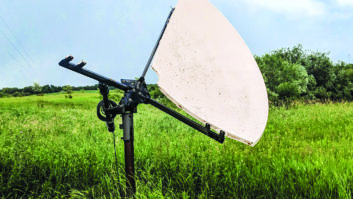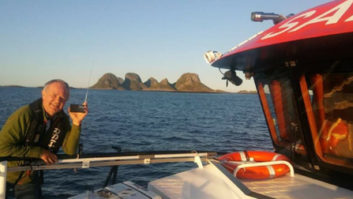The Earth is heading steadily toward radio silence.
Though SETI Institute programs and science fiction writers often presume that the way to find an extraterrestrial civilization is to receive their broadcasts, there�s a problem: If other worlds are like ours, their time as radiators of coherent RF signals that can be received light-years away is short indeed. As technology advances, and data rates go up, spectrum reuse increases; RF communication becomes millions of tiny cells running megabits of digitized data at milliwatts of power.

Digital signals mixed with lots of other digital signals are indistinguishable from noise. While AM, FM and analog TV signals are easily decodable, a digital signal involves so many arbitrary variables in the form of compression and protocols, that even if the bit stream is recovered, it could be very difficult � nigh, impossible � to decode it.
Back on Earth, the amount of information and the number of broadcast services are growing. Short-range wireless IP is rapidly replacing high power broadcasting as the means of delivery.
URBANIZATION
AM was perfect for the first electronic media as it covered large areas for a population that was largely rural. VHF might not have the sky wave or ground wave reach of AM, but for FM and early television, it reached rural rooftop and silo mounted �fringe� TV/FM antennas. It brought FM stereo to those console entertainment centers of the 1960s, even 100 to 150 miles from the big city. Radio stations that could do so moved closer to the urban centers where the audience resides. The 2010 Census figures found 260 million people living in cities, out of a population of 320 million.
Urban settings have become very unfriendly to MW through VHF. They suffer from clumsy big wavelengths where the aperture effect kicks in. One needs an RF hole larger than a wavelength to allow the RF to shine in. That�s why overpasses block AM but not FM or sunlight. Metal studs, narrow windows (sometimes with leaded glass) and rebar do a number on VHF, so much so that public safety radio long ago moved to UHF in cities.
UHF became the beachfront property of broadcasting as rural access became less important and UHF became easier to use and reached farther from the city.
Putting AM radio in a cell phone is absurd. Putting VHF radio or TV in a cell phone is borderline. A 50 or 100 kW FM ERP will light up a cell phone sized device for only a few miles in dense metropolis. If you want to reach urban and suburban neighborhoods with RF, it really has to be UHF.
SHF TECHNOLOGY
But if you want to reach smaller cells of people with big bandwidth, you want to use Super High Frequencies � in the range between 3�GHz and 30�GHz. The combination of small cells, connected via fiber, at SHF, is arguably carrying the bulk of wireless traffic now and will certainly dwarf all other modes in the near future. SHF technology functions at street level and indoors.
To get the same coverage as a UHF system takes an inconceivable number of cells. Thus the high dollar interest in �carpet bombing� the conurbation with a UHF wireless radio access network and offloading as much traffic as practical to a high capacity, but limited coverage, �small cell� system.
In spite of the continual evolution of technology, there will always be a case for free-to-air, highly penetrating, universally-available public service broadcast transmissions, separate from and far more robust than the commercial wireless radio access networks, even if, several decades hence, the only listeners to it are SETI scientists on other worlds.
The Wandering Engineer is an industry stalwart who has been in broadcasting since the days of Marconi and Tesla. He gives his thoughts on the current state of broadcast engineering and the broadcast engineer.




